What Can I Use in Place of Cheese Clloth
Here is the list of the best and most versatile things from your home to use as a cheesecloth substitute. Cheesecloth isn't only for making cheese. There are plenty of other ways you can use it to create homemade treats.
Moreover, cheesecloth is a common tool in plenty of recipes for almond milk, ricotta cake variations, vegetable couscous, etc. If you aren't a professional chef, you probably don't need to buy cheesecloth.
Some gardeners use cheesecloth to protect young trees and plants from frost, as it is breathable and natural.
Luckily, some items provide the same effects as cheesecloth. As someone who tried the cheesecloth and other alternatives, I can share my experience and give you more details on how to use cheesecloth and substitutes for the best results.
What Is Cheesecloth Made of?
Essentially, cheesecloth is cotton fabric. It is loosely woven and looks similar to gauze. There are seven grades of weave, including open and extra-fine weave with different applications in the kitchen.
The number of threads per inch of the fabric in each direction determines the grade.
Watch this video to know more:
Watch this video: Cheesecloth - closer look and more uses
Can Cheesecloth Be Reused?
Here is when cheesecloth substitutes make sense because you cannot actually reuse cheesecloth with the same results. It is especially true when you need to strain something using two or three layers of cheesecloth. The food traps into the weave and can be difficult to get out.
Additionally, sometimes cheesecloth comes with a single-use tag, which indicates that you should try to clean them either by hand or in the machine.
It means that cheesecloth might be costly to use exclusively for the recipes, as often, you cannot reuse it for further preparations.
How To Clean Cheesecloth?
After using a cheesecloth to strain something of a not thick texture, you can clean the cloth completely. There are two ways to do it: by hand or in the washing machine.
Cleaning Cheesecloth By Hand
Use hot water to rinse the cheesecloth. I recommend rinsing it as soon as possible after using it to reduce the risk of food stains and remove food leftovers.
Soak cheesecloth in hot water and baking soda for 30 minutes if you've waited for too long to wash it.
Then, boil cheesecloth in a pot for a minimum of 5 minutes to eliminate bacteria and germs. Store it in the sealed bag after it has been dry completely.
Cleaning Cheesecloth In Washing Machine
The easier alternative to clean your cheesecloth is in the machine with your other clothes. But, rinse the cheesecloth immediately after use and wash it with delicate detergent. Sometimes cheesecloth has a gentle texture, and washing it alone in the machine can damage it, so wash it with other items.
Watch this video to know more:
Watch this video: The easiest method to wash cheesecloth
Cheesecloth Substitutes To Consider Right Now
If single-use cheesecloth seems expensive and an unnecessary cost for you and cleaning it is like one more thing to postpone, check the practical substitutes.
Once I cover the substitutes I recommend, I will list expert uses for both cheesecloth and substitutes to expand their versatility.
Watch this video to know more:
Watch this video: Best tip for straining sauces
Anything Cotton
Cheesecloth is made from cotton so another cotton item will provide similar results. If you have an old cotton scarf, you never plan to use it again, try it to strain your sauces and broths. You can use a Greek yogurt maker to make yourself a healthy yogurt in no time or use a cotton cloth to do it the old-fashion way. It will work like a charm.
Other cotton items you can use instead of cheesecloth:
- Pillowcase
- Flour sack towel
- Reusable cotton fruit bag
- Cloth diaper
- Cotton napkin
I recommend using something you don't care if it stains and is large enough to be held over a bowl and secured with a rubber band. For me, the most practical is the old pillowcase, as it is a cloth diaper, because I can wash it on high-temperature programs and remove stains.
Mesh Bag
You probably have a mesh bag somewhere in your home. Most people use it to wash delicate laundry in the washing machine, and painters use them to strain pain, remove crumbles and lumps and get a fine texture.
Fine-mesh bags actually have the same results as cheesecloth, but they are much easier to clean. Therefore, they are reusable and provide great value.
You can use any mesh bag you have at home, including the one for making almond milk or alcohol to strain your sauces, yogurts, broths, and cheese. Also, if you go to any hardware store and get a paint strainer bag, you will be surprised how great it works for ensuring fine texture. It is also very durable compared to cheesecloth.
Pantyhose
Here is a trick I learned from my mother. Back in the days, people didn't have so many tools to buy for their kitchen so they had to get on with things available to them.
It applies to pantyhose! Stockings might not be as popular fashion items nowadays as they were in the past, but they are still useful in the kitchen.
They work great because it is easy to stretch them over the mixing bowl and use them to strain whatever you need. The fine texture of stockings will ensure the best texture for your dishes.
Also, if you want to make a spice pouch, it is easy with the stockings. Just cut the feet, toss the herbs you want inside and tie it up.
Once you are done with stockings, you can wash them in the machine and use them until they rip completely.
Sieve
Sometimes you don't need to get rid of all lumps, just the largest ones to get the perfect texture for broth and cheese. A few lumps in the cheese sauce won't be a deal-breaker for most home cooks.
If you don't have a cheesecloth, try with the fine-wire sieve. It can be good for some sauces and broths because it will help you make seed-free jelly and other similar items.
Fine-wire sieve is also reusable, and despite not being able to capture fine particles, it can make a difference in your cooking. Anyway, it is better to use a sieve to strain your mixture instead of cheesecloth than not strain it all.
Coffee Filter
To use a coffee filter for straining different mixtures makes sense because the weave resembles the one on the cheesecloth. It is made to prevent the ground coffee from ruining the perfect coffee texture. You can use a disposable coffee filter instead of a cheesecloth or a reusable filter.
If you have a reusable filter wash it after straining food before you put it back in the machine. If not, you risk your coffee tasting like the things you strained through the filter.
Medical Gauze
If you have ever seen cheesecloth, you have probably noticed how vastly it resembles medical gauze. Every house has it as part of the emergency kit, and it can help with kitchen emergencies, too.
However, gauze is thinner and has a more open weave than the original cheesecloth. Therefore, some juicing books with the best juice recipes, advice using medical gauze more than cheesecloth.
You can always overcompensate for the lack of tight structure by using two or more gauze layers to strain the good.
It is quite easy to cut and use once you get to know the size you need to cover the mixing bowl. Gauze isn't reusable, as it might tear up when cleaning, but it is cheaper than cheesecloth. Therefore, it makes a perfect substitute!
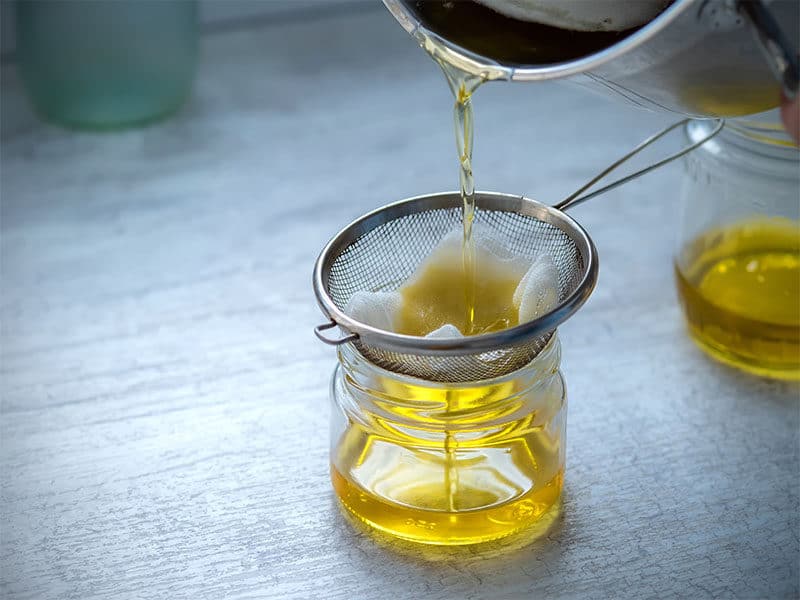
Watch this video to know more:
Watch this video: Making juice with cheesecloth or substitutes
Kitchen Towel
Kitchen towels are, in most cases, made from a cotton blend and designed to hold moisture. They have a similar weave as the cheesecloth, maybe even tighter.
It only means you will have to squeeze harder to strain the food. Also, use towels without dyes that can contaminate the food. If possible, use a thinner towel to complete the straining process quicker.
Kitchen towels are a great substitute for cheesecloth because they are reusable and easy to wash.
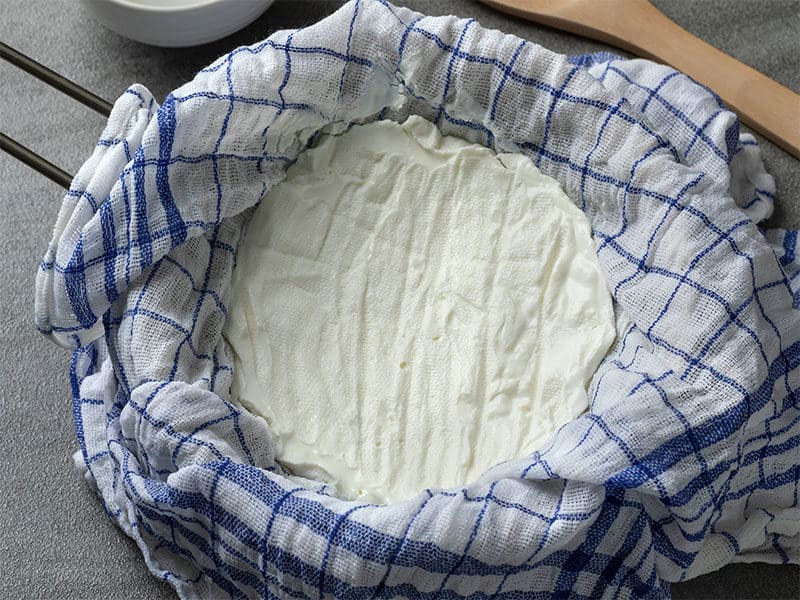
Muslin
The muslin fabric has similar properties as cheesecloth. It is an excellent alternative that is also easy to clean in the washing machine. Muslin doesn't stain easily and can let liquids out easily while holding the crumbles and lumps behind.
The fabric is available without dyes in most textile stores and comes at a reasonable price. You can get in different shapes to pair with your mixing bowls.
Linen
Linen is another alternative to cheesecloth. Flax plant fibers make the base of the linen and make it strong and very absorbent. Some dish towels are made from linen, and it is mostly used for summer clothing.
However, the tight weave makes it suitable for food straining. However, you will have to put more effort the get enough liquid. On the good side, it will get you the smoothest texture ever, which makes it perfect for fine sauces, yogurts, and delicacy cheese.
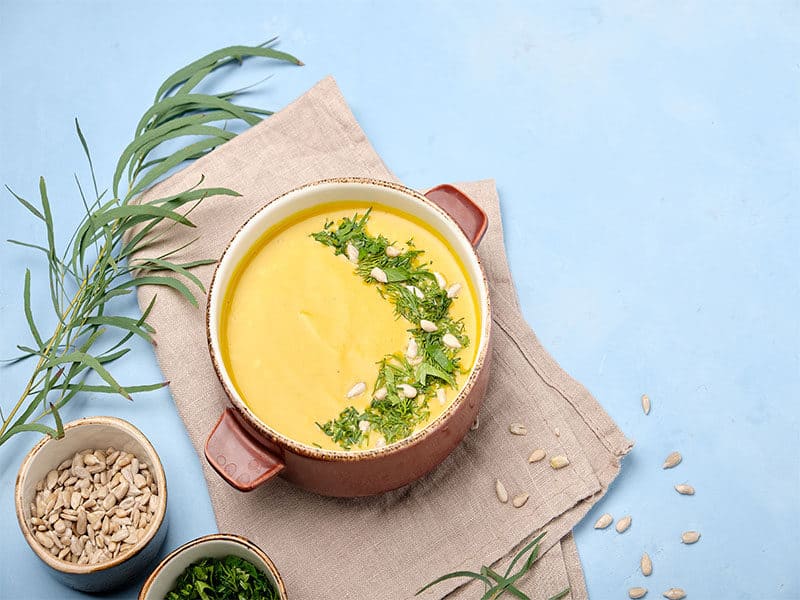
What Doesn't Work As A Cheesecloth Substitute?
Even though you might be tempted to use paper towels instead of cheesecloth, I strongly advise you against it. No matter how quality your kitchen towels are, they are paper, and paper dissolves in liquids.
You will have to squeeze the towel to strain the liquid. If you don't squeeze it, the towel will do what it is supposed to – absorb it.
No matter what paper towel you have, it will when you try to strain the food. Trust me, I tried it.
But, if you like your cheese and yogurt with cellulose, you can go with it.
If not, use a paper towel to absorb liquid from hard spots, dry things, and pat the excess moisture from steaks and meat.
Tips To Get The Best Results Of Cheesecloth Substitutes
Here are some tips I came out with after years of use some of the cheesecloth substitutes I recommended in the previous section.
#1 Cut Generously
If you are cutting a piece of cotton, muslin, or linen to use instead of cheesecloth, always cut more than you need. That way, you will be able to place the cloth over the bowl and secure it safely with a rubber band. It will save you time, especially when you are straining food of thin texture.
#2 Don't Contaminate Food
Make sure your cheesecloth substitute doesn't have dyes or chemicals that can contaminate the food you are straining. One time, I used the old scarf for straining, the colors dissolved and ruined the homemade yogurt I was so desperate to make.
Also, when using muslin, pick unbleached muslin to make sure it is free of chemicals.
#3 Always Use A Sieve
Whichever item from my list you have chosen to use instead of cheesecloth, I recommend putting a sieve under it. So, as you cook, you can put the bowl in the refrigerator to chill and cover it with a used cheesecloth substitute.
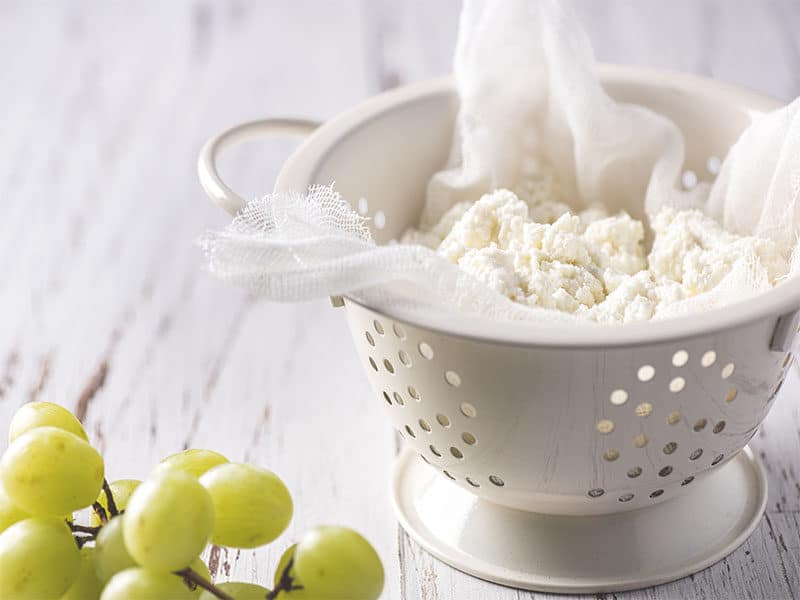
Most people use cheesecloth (and substitutes) for straining food and making cheese. But, here are some ideas on how you can use them to improve the presentation of your dishes, and more.
Dusting
Dusting freshly baked cookies with powder sugar or cocoa may be uneven if you do it by hand. You can use a piece of cotton to cover the container with powder sugar and tighten it up as much as possible. Then, put your cookies in a cookie jar that maintains freshness and enjoy your perfect cookies any time.
Covering Food
Cheesecloth and the substitutes are great for covering the food until it cools down. It will protect the food from insects, and allow it to bread. It is especially useful for baked food, such as bread, croissants, rolls, etc. The cloth will let the dough breathe and maintain its crunchiness.
You don't want to ruin your black burger buns made according to the best recipe, by cutting them too fast. Cover them with gauze and let them sit for a couple of minutes until they are ready to be cut open and filled with burger ingredients.
Cleaning
Nothing polishes silver and pots such as cheesecloth and the substitutes. Linen and medical gazes are the best things you can use to remove water stains from silverware, pots, and pans. You can add a bit of baking soda to dampen the cloth to get the best results.
Your kitchenware will restore its shiny appearance!
Cheesecloth Substitutes Save Money
Cooking is a creative process, and you are allowed to play with the tools and items you have around until you see what works best. Yes, cheesecloth is a special piece of cloth created specifically for straining food, but so many other items around you will do the same. And the costs are significantly smaller.
Cotton, muslin, linen, gauze, coffee filters, sieve, and mesh bags can help you smooth out the texture for your recipes including cream sauces and straining liquids.
Let me know what you think about the article in the comments. Show some love by liking the article and sharing it with your friends to help them save some money on cheesecloth!
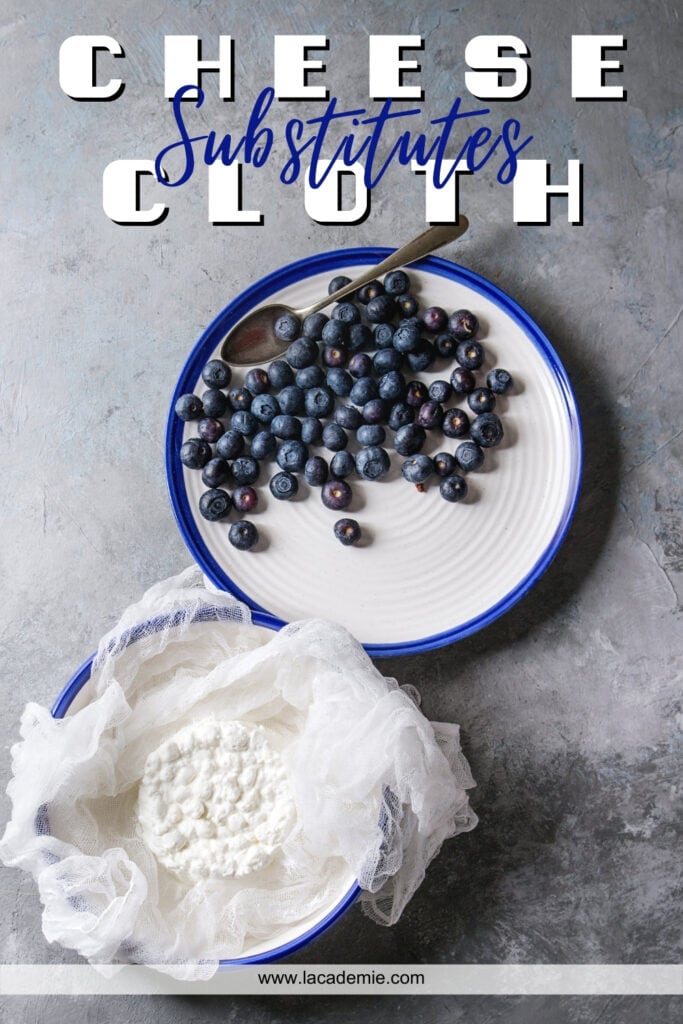
What Can I Use in Place of Cheese Clloth
Source: https://www.lacademie.com/cheesecloth-substitutes/